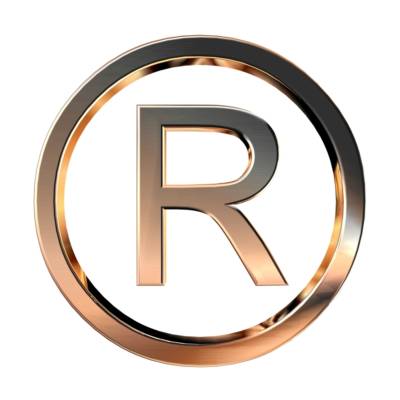{5:00 minutes to read} The rules around when and how to use symbols to mark trademarks on product packaging and marketing materials are often misunderstood and misapplied. Trademark symbols are used to mark words, phrases, taglines, and logos that identify the source of a product or service. The symbols put others on notice that the owner is claiming rights in the trademark.
I will use “trademark” to refer to both trademarks and service marks in this article. A trademark identifies the source of a product. A service mark identifies the source of a service. It’s usually unnecessary to distinguish between the two designations. It’s common to simply refer to service marks as “trademarks.”
And, trademarks are not always “registered” trademarks. In the US, you can claim trademark rights without having registered the trademark in the US Patent and Trademark Office. Registration provides important benefits, but it is not legally necessary. There are many reasons why a trademark might not be registered, including that the owner faced difficulties in the US Patent and Trademark Office, the owner wasn’t aware of the registration option, or the owner didn’t want to spend money to go through the process. Regardless of the reason, the owner can still mark its trademark with a trademark symbol.
There are several common ways to mark a trademark, including:
- R in a circle (®) for a trademark or service mark that has been registered with the US Patent and Trademark Office.
- SM(℠) for a service mark;
- TM (™) for a trademark; and
The ℠ and ™ options can be used regardless of whether the trademark has been registered.
In the US, you are not legally required to use a trademark symbol. There are certain benefits, however, to doing so. The symbol can act as a deterrent. Companies looking to adopt a new product name, for example, may come across your marked trademark and decide to choose another name.
Another benefit is that if you file a lawsuit claiming trademark infringement, your recovery could be limited if you didn’t use a trademark symbol at the time that the infringement occurred. And, the laws in other countries vary. In some countries, you may be required to use the trademark symbol to successfully claim infringement.
Many popular brands choose not to use a trademark symbol. This is likely because once a trademark has reached a certain level of notoriety, it would be difficult for an infringer to successfully claim that it wasn’t aware of the owner’s trademark rights.
How Do I Use the Registration Symbol Properly?
There are legal as well as practical concerns to consider. Oftentimes marketing materials, product packaging, and logos are created before a trademark registration has been issued (the registration process typically takes 10-12 months). It’s improper to use ® symbol during this time. Misusing the symbol can invite claims of fraud from third parties. It can also create issues in the trademark registration process, so when in doubt, use the ™ or ℠ symbol. Don’t use the ® until you have a registration.
Once the trademark registers, owners can update materials to use ® when they have the resources to do so. It’s not necessary to switch to the registered symbol immediately after the registration issues.
People often find it burdensome to use a trademark symbol each time the trademark appears. I often suggest using the trademark symbol at least once where the trademark appears predominantly. It’s not necessary to use the symbol each and every time the trademark appears. For instance in website copy, as long as the mark is used clearly at the top of the website with the symbol, you may not have to put the symbol next to the trademark each and every time it appears in the text.
Placement
The rules around the placement of a trademark symbol are flexible. The symbol is typically placed in the upper right-hand corner, in the lower right-hand corner, or level with the trademark.
If you’re unsure about how to use a trademark symbol and when to use it, it’s best to consult with the trademark attorney about your specific scenario and concerns.
Kelly Weiner
Trademark Counsel
Law Office of Kelly Weiner PLLC
175 Varick Street, Fl 6
New York, New York 10014
(E) info@kellyweinerlaw.com
(P) 212.360.2307



